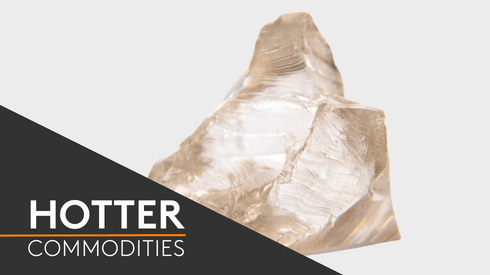We are unsurprised by China’s announcement last week of a pending imposition of temporary export controls on several synthetic and natural graphite products. It was inevitable that Chinese authorities would react to actions by both the United States and EU governments to target China’s EV and battery sector dominance over the past year through the US Inflation Reduction Act (IRA), the EU Critical Raw Minerals Act and, more recently, the EU’s antisubsidy investigations into imports of Chinese EVs. The US and EU have stated that these initiatives are critical to reducing the national security risks of excessive dependence on China, while China has equally now stated that the graphite export permits are necessary to protect its national security and interests.
China’s target of choice – graphite – is also unsurprising. While the US and EU have focused primarily on securing cathode active material supplies in recent years, focus on anode active material supply has been lacking, a vulnerability that Fastmarkets has highlighted repeatedly. The lack of focus by non-Chinese markets on graphite has been a strategic error. Ex-China investors have largely ignored graphite because it represents only 10% of lithium-ion battery costs, however, graphite comprises approximately 50% of the weight of the battery, rendering it critical in the lithium-ion battery raw materials supply chain. China is exposing this oversight and resulting weakness.
While fledgling ex-China graphite projects have largely struggled to secure adequate investment and are struggling with delays and extended material qualification times, China has moved to increase its dominance in graphite supply over the past year, particularly in synthetic graphite supply. China is moving both to expose EU and US vulnerability in graphite supply and to expose ex-China’s direct and indirect dependence on Chinese graphite. While US automakers engage in joint ventures with South Korean and Japanese battery makers, which are free trade agreement partners, both South Korea and Japan are also largely dependent on Chinese graphite production for their active anode material.
In our view, Chinese actions will also expose flaws in the US IRA’s ambitious targets for local content values in both battery components, including anodes, and critical minerals, including graphite, in the coming years. We have doubts about the feasibility of these initiatives to the extent proposed and in the indicated time frame. Without a dramatic change in current graphite market conditions, the acceptance of graphite anode material that has been at least partially processed in China, or a significant pullback in US EV production targets, we remain concerned that the targets will not be achieved.
We maintain the view that diversification in graphite supply sourcing away from China is only achievable with government intervention, and it now appears that it may be the Chinese government that, in fact, forces other governments to act on graphite.
China’s action on graphite export controls may be just what the market needs to spur global graphite prices and investment forward. Clearly, in the near term, we expect the announcement to trigger a much-needed reversal in graphite pricing, benefiting Chinese producers initially, and probably responsible for China’s reasoning in acting now. Chinese graphite prices have been in a downward spiral for the past year, with prices at or below production costs, and upward impetus is needed to protect the domestic supply chain.
Triggered by the renewed sense of urgency, demand for Chinese graphite exports will surge in the coming weeks, with consumers in South Korea, Japan, the US and Europe expected to seek to secure material before export regulations go into effect on December 1. Pricing gains are forecast to continue into December/January reflecting both stockpiling activity and production cutbacks during the Chinese winter months. Higher prices and a renewed sense of panic regarding future graphite supply availability should encourage increased investment and interest in graphite projects, which would in turn aid the US and EU with achieving their goals of localization of supply and diversification of supply away from the current heavy dependence on China.
For now, Fastmarkets’ assessments of graphite prices are unchanged, with the latest pricing session occurring the day before the Chinese government’s announcement on the new temporary export controls. Fastmarkets assessed graphite flake 94% C, -100 mesh, fob China at $530-604 per tonne and graphite spherical 99.95% C, 15 microns, fob China at $2,000-2,200 per tonne, both unchanged from the prior week. Fastmarkets assessed graphite flake 94% C, -100 mesh, cif Europe at $600-620 per tonne, also stable from the previous week. Given the latest market developments, we expect to see prices trend stable to higher in the coming weeks, in line with our previous forecasts.






